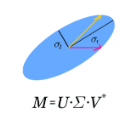Diffuse Optical Tomography (DOT) is an emerging technology in medical imaging which employs light in the NIR spectrum to estimate the distribution of optical coefficients in biological tissues for diagnostic and monitoring purposes. DOT reconstruction implies the solution of a severely ill-posed inverse problem, for which regularization techniques are mandatory in order to achieve reasonable results. Traditionally, regularization techniques put a variance prior on the desired solution/gradient via regularization parameters, whose choice requires a fine tuning, specific for each case. In this work we explore deep learning techniques in a fully data-driven approach, able of reconstructing the generating signal (optical absorption coefficient) in an automated way. We base our approach on the so-called Learned Singular Value Decomposition, which has been proposed for general inverse problems, and we tailor it to the DOT application. We perform tests with increasing levels of noise on the measure, and compare it with standard variational approaches.
翻译:Diffuse光学成像(DOT)是医学成像(DOT)的新兴技术,利用国家清单报告光谱中的光来估计生物组织中用于诊断和监测目的的光系数分布情况。DOT重建意味着要解决一个严重不良的反向问题,必须采用正规化技术才能取得合理结果。传统上,正规化技术先于理想的解决方案/通过正规化参数升级,而这种参数的选择需要细微的调整,具体针对每个情况。在这项工作中,我们探索一种完全以数据为驱动的方法的深层次学习技术,能够以自动化的方式重建生成信号(光学吸收系数) 。我们的方法以所谓的 " 已知的单项值分解定位 " 为基础,这是针对一般反向问题提出的,我们根据DOT的应用进行调整。我们用测量的噪音水平不断提高的测试,并将它与标准变异方法进行比较。




